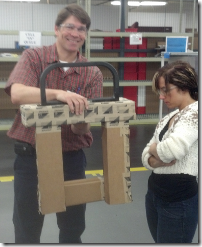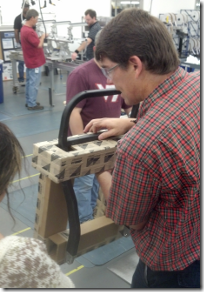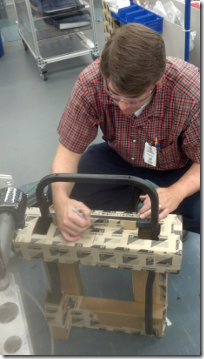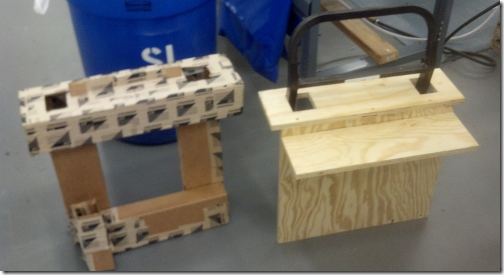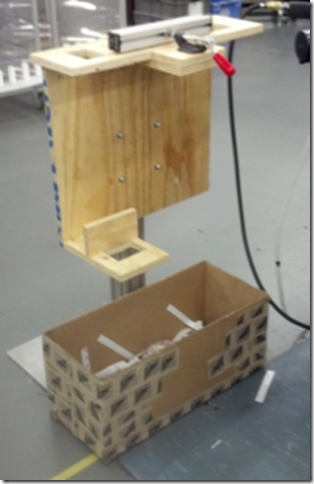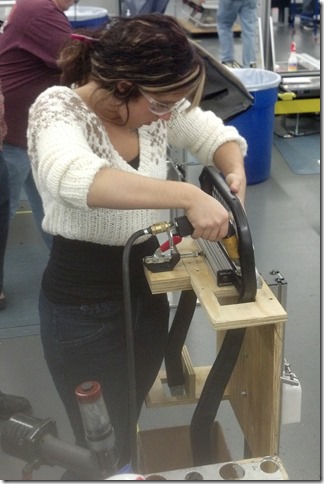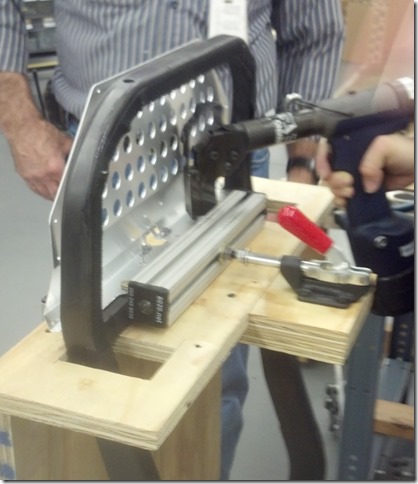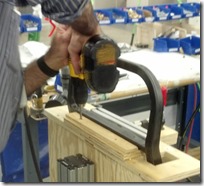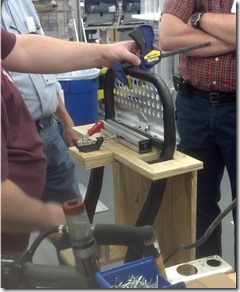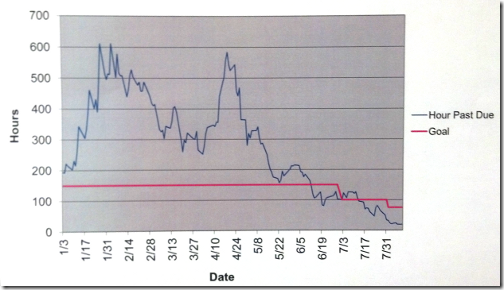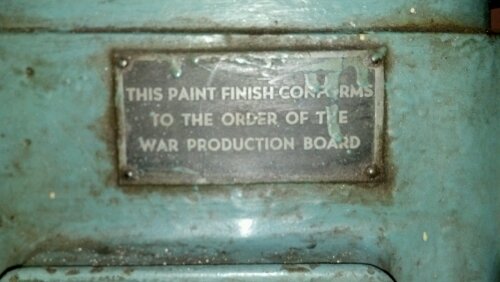I got an interesting email from a friend a while ago, and am finally finishing up this post about it. Some months ago, he joined a new company and wrote about his impressions of some of the legacy he was walking into:
[before my arrival, the company] used Xxxxxx consultants to get their Lean effort up and running.
They were given training modules that are 30-40 slides long and unbearable to sit through.
They were taught a very rigid approach to kaizen that focuses more on strict standards than helping to improve performance.
As a result there are deep divides between some of the groups here and the Lean team. It’s unbelievably frustrating to see how much money was spent learning an approach to Lean that is outdated and ineffective.
Actually, it was worse than ineffective, it was detrimental in a lot of ways. There are numerous areas we have to dig ourselves out of a hole that was created by events that absorbed substantial resources for zero long term gain.
He goes on to ask for a discussion on The Lean Thinker…
[…] about the event and tools based approach versus the daily problem solving approach.
And goes on to observe:
There is still a deep divide in the Lean world as to which is the best method. It’s seems to me that there are more people on the event and tools side of the fence than there are on the daily problem solving side of the fence.
I included these quotes because this is a real perception from the real world. My friend recognizes the need to adopt daily improvements driven by line leaders.
What he sees, though, is that these kaizen events didn’t (in his view) transfer those skills, or that behavior, to the organization.
There is nothing unusual about the process described above. I was taught pretty much the same thing: A “kaizen event” is about a specialist workshop leader planning and conducting the event “to the standard.”
Who are you developing?
This approach does develop a skill in the organization.
A relatively small group of people (usually the promotion office staff) get pretty good at planning and running kaizen events following whatever standard is in place.
They get good at it because they are the ones who plan and run those events, over and over. In other words, they practice.
That, of course, begs the question: Who are you developing?
I’ve seen (and been in) a number of companies who strive to have “every team member participate in at least one kaizen event a year.” In a plant with 250 team members, at 8-12 of them participating in a typical kaizen event, that works out to something like 25 kaizen events a year, or a bit more than two a month. A typical promotion office staff in a plant this size might be able to keep up with that rate, but I have seen more struggle to do so than succeed.
So with this tempo of kaizen events, each team member gets to participate in an improvement activity roughly once a year.
Granted, a lot can get done over the course of that week. But the other 49 weeks are business-as-usual, so business-as-usual is what they are learning.
Put another way, if you want to get good at skiing, it is going to take more than one week on the slopes every winter.
More Important: What are you striving for?
This is really the same question I asked above, but in the context of the purpose of your kaizen events.
What was that consultancy striving to do with their client?
What was the client striving for?
My guess is both were pushing hard for rapid measurable results – an immediate and visible return on the investment.
But if you are striving to develop leaders, then the kaizen event takes on a completely different tone. (Note that when I say “leaders” I don’t limit myself to people in formal leadership position. I mean anyone who is willing and able to step up to a challenge, and enlist the help of others to meet it.)
There is also a very different expectation for what happens after a kaizen event. No longer do we have lists of actions to complete. Rather, we have the current obstacle we are working on, and the next experiment that is going to be conducted on Monday.
The key is that a kaizen event has to kick-start a change in the daily routine that goes above and beyond changing the work. I’ll go so far as to say that changing the work is secondary. If you can kick start getting improvement as part of the daily work, then the work itself will improve quickly enough.
Your measure of success, then, is not the results you get during the kaizen week. It is whether or not you can sustain the rhythm of improvement thereafter.
Just some things to think about.
